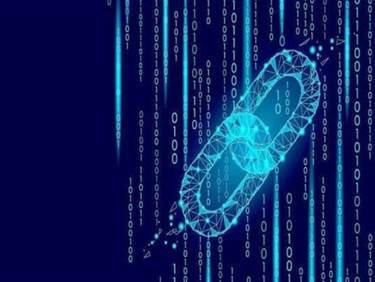SQL vs NoSQL: Whats the Difference?
This line includes premium all-in-one IDEs for major database management systems as well as standalone tools and add-ins for specific database-related tasks. RDBMS stands for Relational Database Management System and represents software that is used to manage, manipulate, query, and retrieve data stored in a relational database. NoSQL databases may not be fully ACID compliant, making it challenging to ensure data consistency and integrity in distributed database systems. However, some NoSQL databases provide eventual consistency, allowing faster data access and higher availability. For example, a Riak database can provide read and write operations without locking or blocking but with a risk of some older data.

Thus the accuracy of data in SQL databases is higher as compared to other database types. NoSQL databases can be faster than SQL databases for specific operations, such as read-heavy workloads and horizontal scaling. However, SQL databases can be faster for complex queries and have strong consistency. SQL https://www.globalcloudteam.com/ is also the best choice when you want to use a standardized query language for data management across different database systems and third-party tools. So, NoSQL systems are suitable for applications where immediate consistency is not critical, and the trade-off for improved scalability is acceptable.
Inconsistency in data retrieval
If speed is a concern, a SQL database can be partially denormalized by removing a certain number of JOINS. If organization and redundancy is a concern, a portion of the data can be normalized in separate tables. Avoid pursuing the latest and greatest just for the sake of newness. Programmers may like the idea of new tech, but what’s hot today may be discontinued five years from now. It’s challenging to find people or support for a discontinued product, and replacing a database mid-project is usually costly.

SQL databases are also commonly used for legacy systems built around a relational structure. NoSQL databases are document, key-value, graph, or wide-column stores. These flexible data models make NoSQL databases easier for some developers to use. NoSQL is preferred over SQL in many cases because it offers more flexibility and scalability.
Master SQL Vs. NoSQL Database Technologies With ProjectPro
SQL is a better choice if you’re dealing with an RDBMS (relational database management system) and want to analyze the data’s behavior or want to build custom dashboards. However, the decision to choose a database is not that simple (what is really?!!). Both the SQL and NoSQL databases have different structures and different data storage methods. So the choice between SQL vs NoSQL essentially boils down to the type of database that is required for a particular project. Unlike with SQL, their built-in sharding and high availability requirements allow horizontal scaling.
This article has looked at some of the most popular NoSQL databases and explored their features. The cloud has had a when to use NoSQL vs SQL significant impact on the world of databases. In the past, most businesses used relational databases such as SQL.
SQL and NoSQL comparison table
In a column-oriented database, the data is stored and organized as columns. This type of database is beneficial if you need to store sparse data. Both SQL and NoSQL databases serve the same purpose i.e. storing data but they go about it in vastly different ways. Relational databases are efficient, flexible and easily accessed by any application.
But the hardware would remain even when it came time to scale down. The types of join and join commands vary depending on which records a query retrieves. Join types can be used only after data is loaded into a relational database. A 2017 IDC report predicted worldwide revenues for operational SQL and NoSQL database management systems would increase from $27 billion in 2017 to $40.4 billion by 2022.
NewSQL databases
Popular SQL databases include Oracle, MySQL, Microsoft SQL Server, and PostgreSQL. Below, we’ll look at some of the features that make SQL a popular choice among developers. It can be a complex and time-consuming process, especially if the database needs to be compatible with multiple types.
- For a NoSQL database, data is distributed across different regions and multiple servers, implying no single failure point.
- However, a NoSQL database can be consistent (or not) based on DBMS.
- CQL differs from relational databases in that, though ScyllaDB does support multiple tables, it does not support JOIN operations between its tables.
- In this article, we’ll compare MongoDB and MySQL in terms of performance, scalability, and ease of use.
- These relational databases, which offer fast data storage and recovery, can handle great amounts of data and complex SQL queries.
- It would need to match millions of users, each with millions of users, and all those with their own millions of users and ultimately filter billions of (double) users.
They can handle semi-structured and unstructured data required for big data workloads and real-time data streams. If your company is growing rapidly and doesn’t need clear schema definitions, then NoSQL is what you want. A relational database won’t offer as much flexibility as NoSQL, which is great for companies that need to churn through large amounts of data that comes in varying structures. As delineated in many examples above, traditional RDBMSs are also rebranding as generalized databases and connecting with NoSQL. Clearly both paradigms remain valid in the modern transition to the cloud.
When to Use SQL vs. NoSQL
NoSQL has been around for so long that it’s hard to argue a business case for changing to a newer one. Oracle has solved management issues like data replication, which might leave someone using, ElasticSearch, for instance, unsupported with a compromised system on their hands. To avoid this, some businesses support opensource databases, like ElasticSearch, in-house, so you can buy in the help you need from them.

NoSQL database is used for distributed data stores with humongous data storage needs. For example companies like Twitter, Facebook, Google that collect terabytes of user data every single day. This makes it very fast to query and easy to scale horizontally, but it can also be difficult to sort through if you’re used to the simple structure of SQL tables. Broadly speaking, SQL databases require more advance preparation and planning of the relational model, but the benefit is that your data will be consistent and clean. The relational model represents how data is stored in the database, such as how each table is structured and related to other tables. NoSQL database provides a mechanism for the storage and retrieval of data that is modelled other than in tabular form.
SQL Vs. NoSQL- Cost
For example, a Microsoft SQL Server or Oracle database can require significant upfront costs for licenses, hardware, and maintenance. Additionally, SQL databases may require specialized personnel for database administration, which can add to the overall expenses. This can simplify development by providing a familiar interface while leveraging NoSQL databases’ high-performance levels. One common approach is to use a NoSQL database as a caching layer for SQL data. This reduces the number of SQL queries to be executed while still ensuring data consistency and durability.